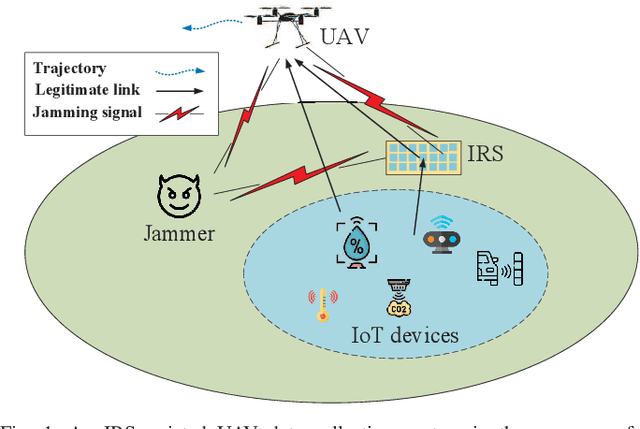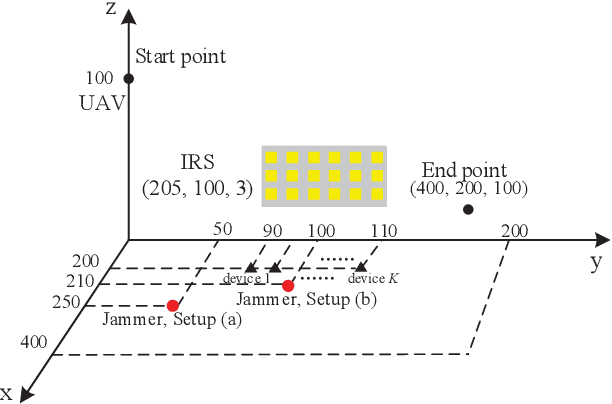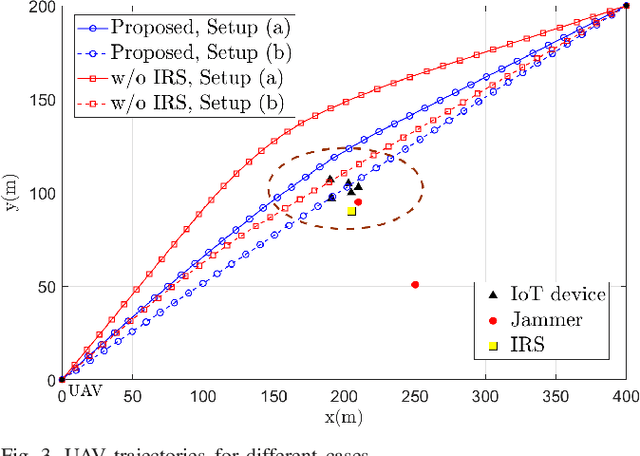Energy Efficient Design in IRS-Assisted UAV Data Collection System under Malicious Jamming
Paper and Code
Aug 31, 2022



In this paper, we study an unmanned aerial vehicle (UAV) enabled data collection system, where an intelligent reflecting surface (IRS) is deployed to assist in the communication from a cluster of Internet-of-Things (IoT) devices to a UAV in the presence of a jammer. We aim to improve the energy efficiency (EE) via the joint design of UAV trajectory, IRS passive beamforming, device power allocation, and communication scheduling. However, the formulated non-linear fractional programming problem is challenging to solve due to its non-convexity and coupled variables. To overcome the difficulty, we propose an alternating optimization based algorithm to solve it sub-optimally by leveraging Dinkelbach's algorithm, successive convex approximation (SCA) technique, and block coordinate descent (BCD) method. Extensive simulation results show that the proposed design can significantly improve the anti-jamming performance. In particular, for the remote jammer case, the proposed design can largely shorten the flight path and thus decrease the energy consumption via the signal enhancement; while for the local jammer case, which is deemed highly challenging in conventional systems without IRS since the retreating away strategy becomes ineffective, our proposed design even achieves a higher performance gain owing to the efficient jamming signal mitigation.
 Add to Chrome
Add to Chrome Add to Firefox
Add to Firefox Add to Edge
Add to Edge